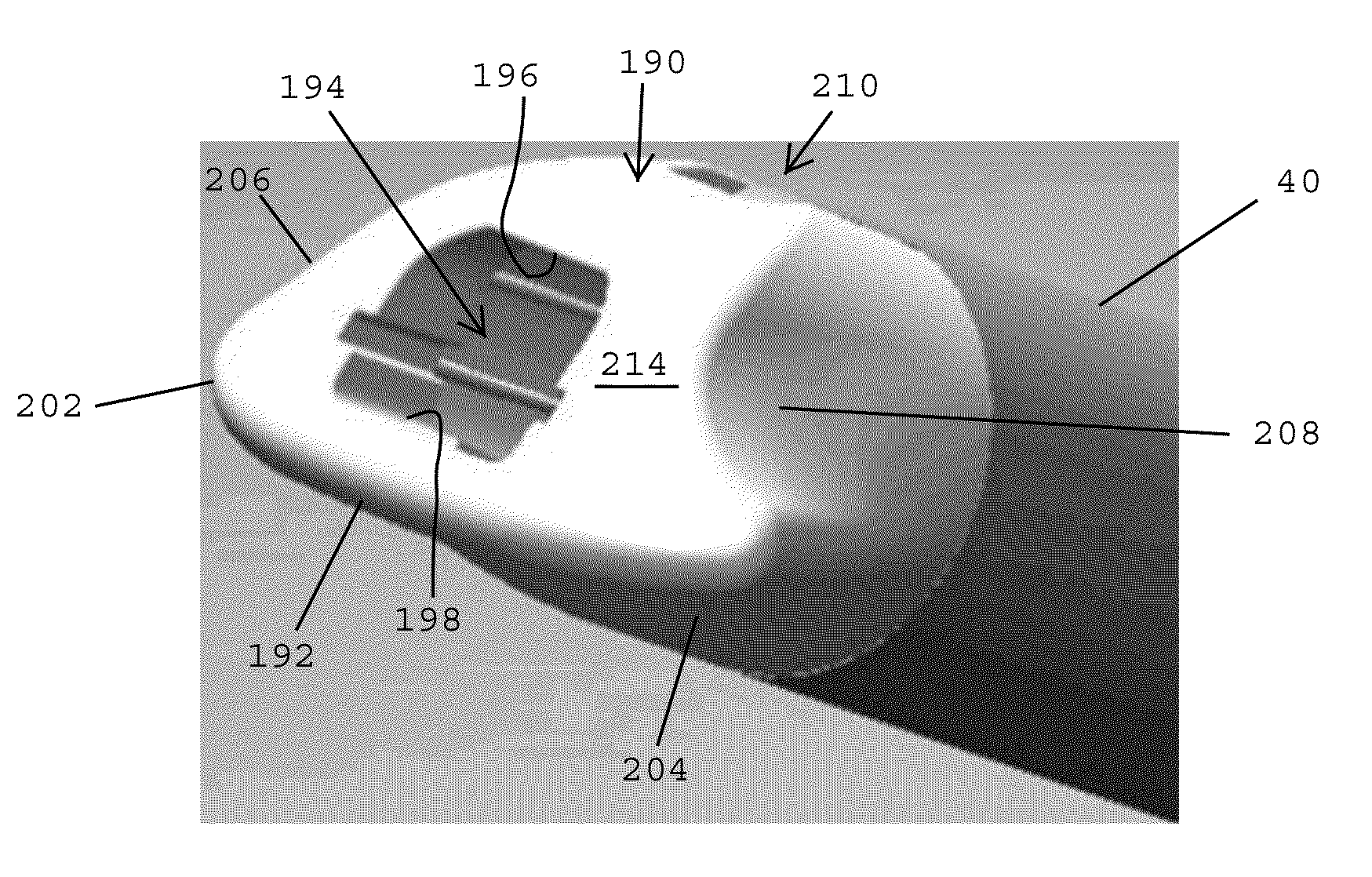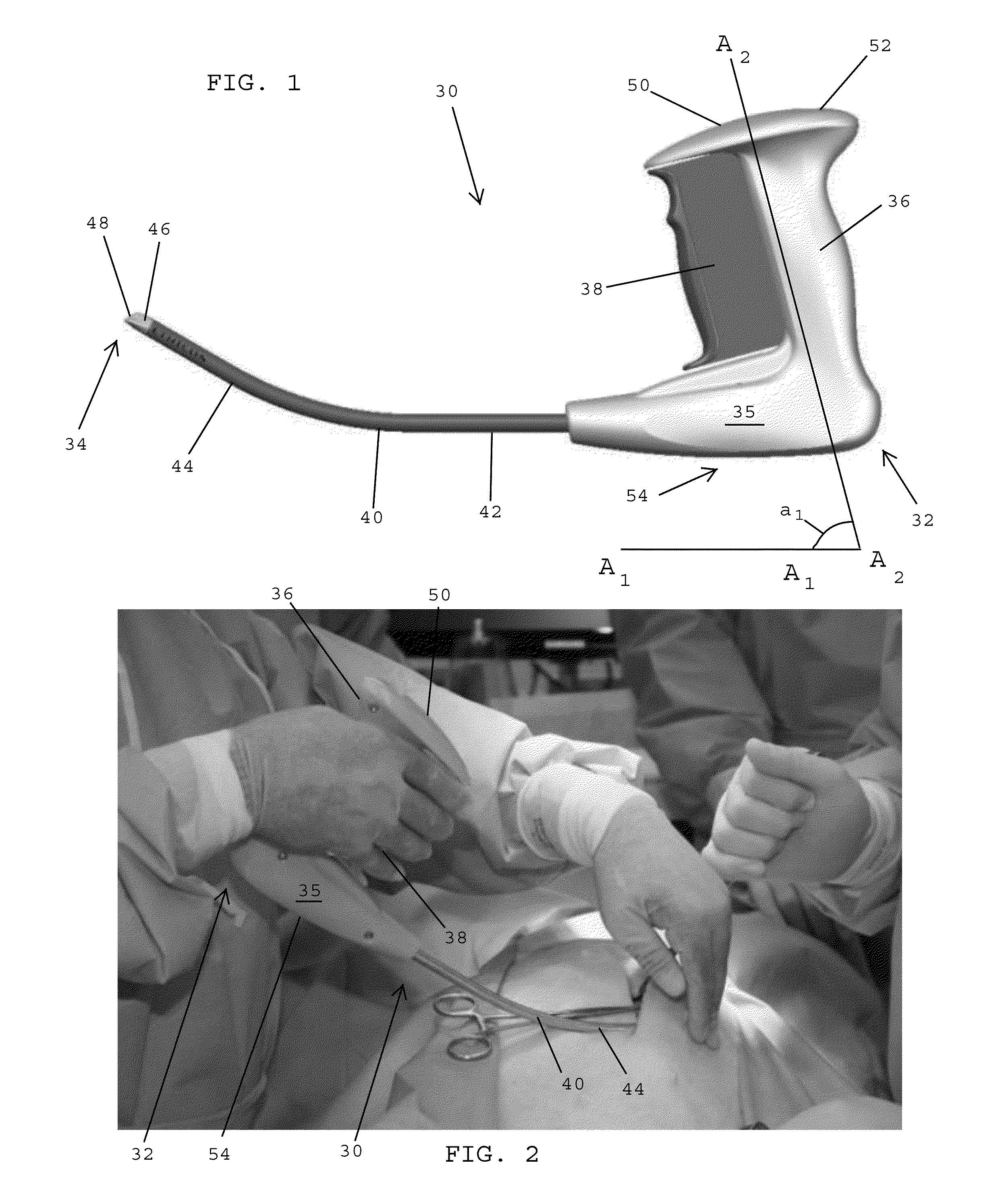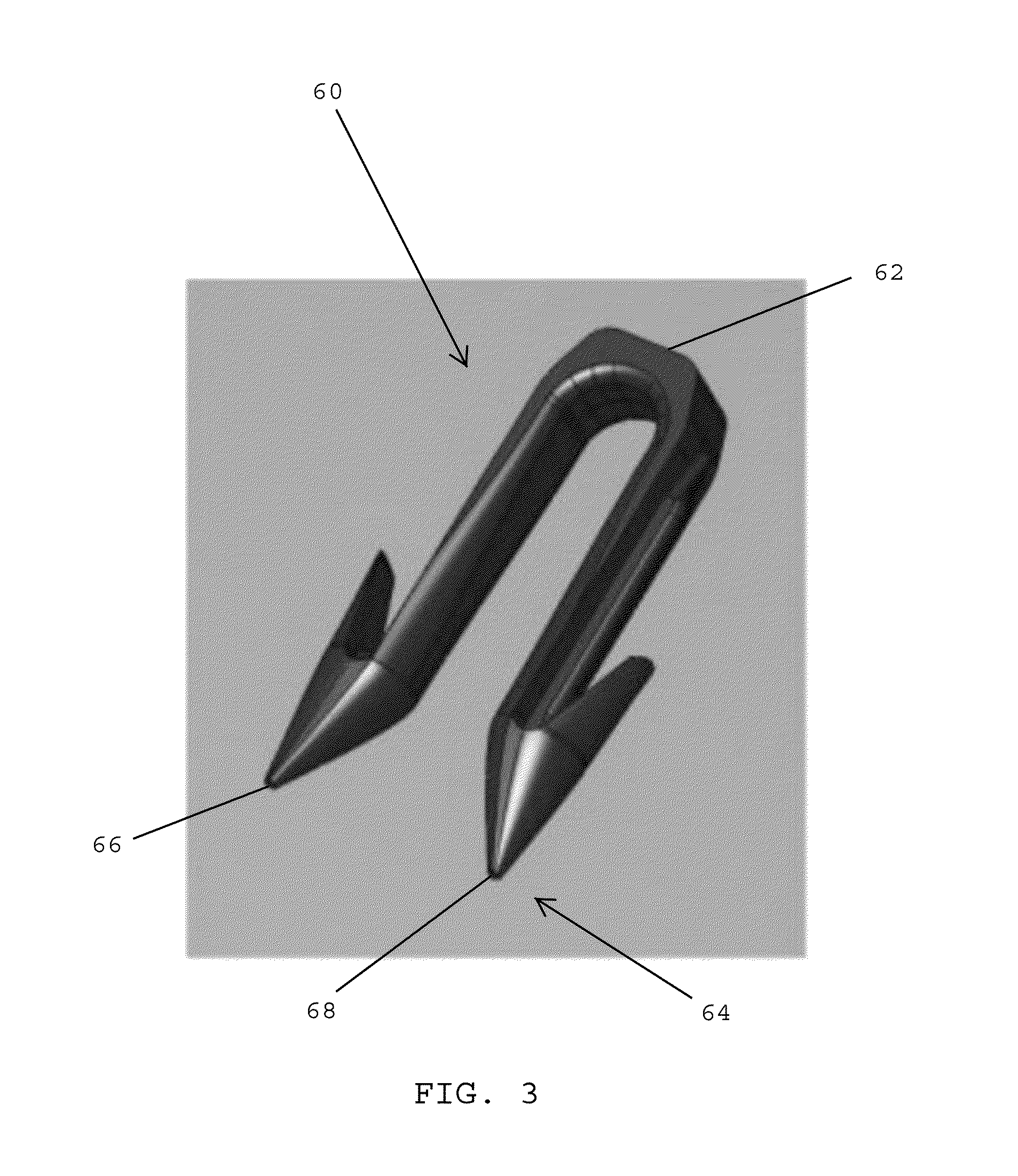Applicator instruments having distal end caps for facilitating the accurate placement of surgical fasteners during open repair procedures
a technology of end caps and surgical fasteners, which is applied in the field of medical devices and surgical procedures for correcting tissue defects, can solve the problems of reducing lifting abilities, affecting the accuracy of surgical fasteners, so as to eliminate the potential risks of binding
- Summary
- Abstract
- Description
- Claims
- Application Information
AI Technical Summary
Benefits of technology
Problems solved by technology
Method used
Image
Examples
Embodiment Construction
[0102]Referring to FIG. 1, in one embodiment, an applicator instrument 30 for dispensing surgical fasteners has a proximal end 32, a distal end 34, and a longitudinal axis A1-A1 that extends between the proximal and distal ends. The applicator instrument 30 desirably includes a housing 35, a handle 36 extending upwardly from the housing, a trigger 38 mounted on the handle, and an elongated shaft 40 that extends distally from the housing 35. The elongated shaft 40 includes a first section 42 that extends along the longitudinal axis A1-A1 of the applicator instrument, and a second section 44 that is angled or curved relative to the first section 42.
[0103]In one embodiment, a cap 46 is secured to the distal end of the elongated shaft 40. The cap 46 preferably has a distal face 48 that slopes away from a lower distal edge of the cap and toward the proximal end 32 of the applicator instrument 30.
[0104]In one embodiment, the handle 36 includes an upper end 50 containing a counter 52 that ...
PUM
 Login to View More
Login to View More Abstract
Description
Claims
Application Information
 Login to View More
Login to View More - R&D
- Intellectual Property
- Life Sciences
- Materials
- Tech Scout
- Unparalleled Data Quality
- Higher Quality Content
- 60% Fewer Hallucinations
Browse by: Latest US Patents, China's latest patents, Technical Efficacy Thesaurus, Application Domain, Technology Topic, Popular Technical Reports.
© 2025 PatSnap. All rights reserved.Legal|Privacy policy|Modern Slavery Act Transparency Statement|Sitemap|About US| Contact US: help@patsnap.com



